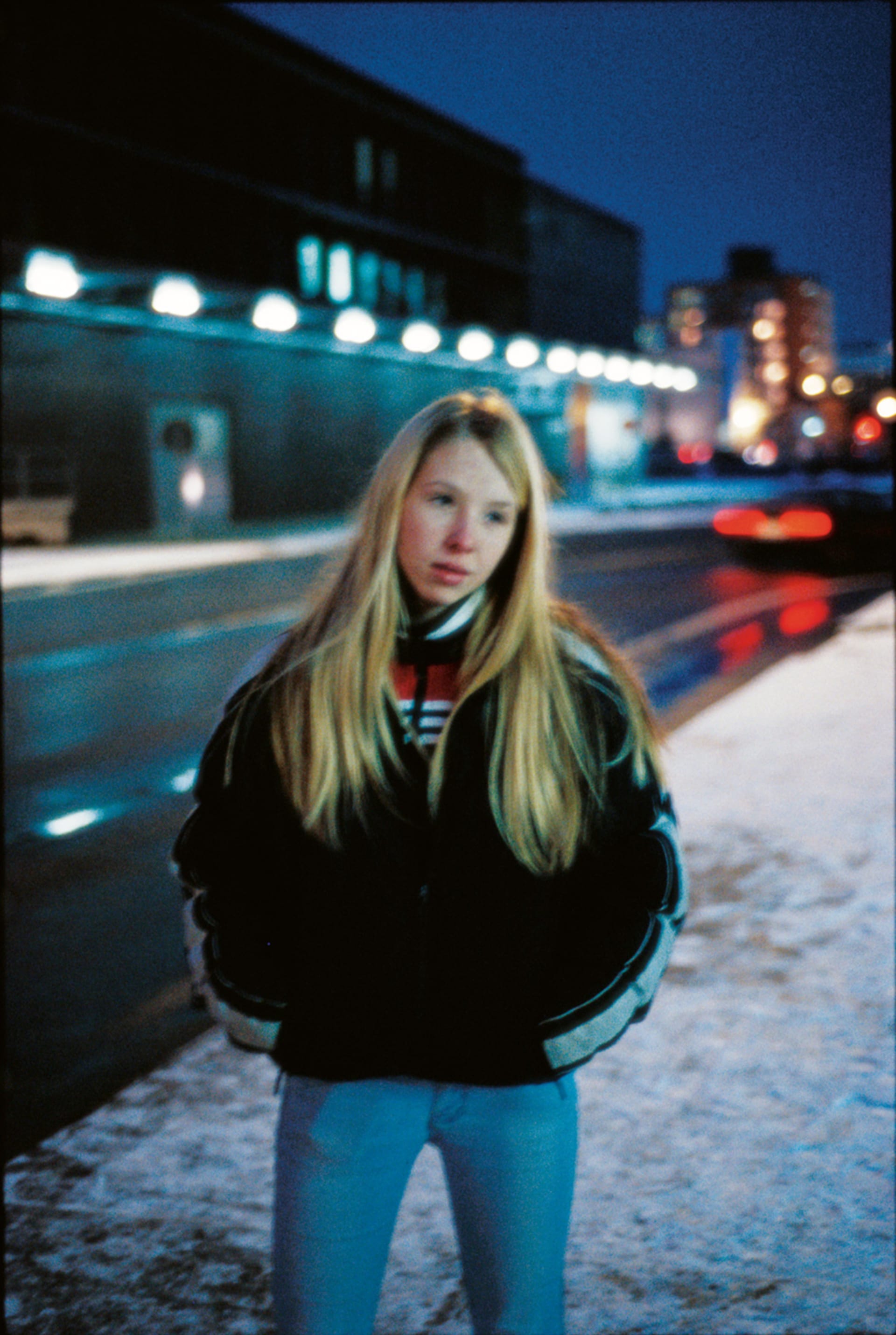
“Waiting for a moment that will never come”: Max Dax recommends Tobias Zielony’s Story/No Story
As the much-discussed, German photographer’s solo exhibition at Berlinische Galerie draws to a close, we revisit our editor-in-chief’s recommendation—originally published in our Spring, 2013 print magazine—of Zielony’s photo book Story/No Story. Above: Tobias Zielony, Mädchen, 2003 (courtesy of Tobias Zielony and KOW Berlin).
In John Carpenter’s 1976 film Assault on Precinct 13, an ultra-violent street gang lays siege to a remote police station in a vast Los Angeles wasteland of neon and streetlights. In somewhat dialectical fashion, this low budget classic focuses on the tension between angry teenagers and society, and between darkness and glow. The same can be said of German photographer Tobias Zielony’s haunting, cinematic photo series, The Cast, shot at night in The City of Angels (and lights). Bookended by two images of palm trees and the Pacific Ocean, you can’t tell for sure if the teenagers Zielony recurrently portrays are posing for him as if they were being cast, or if posing is simply an important part of figuring out teenage identity. There they stand, they can do no other. Zielony’s young subjects seem drawn to sources of light like moths and, in the artificial glow of gas station signage or out on the streets, seem reminiscent of characters from Carpenter’s film. But unlike the nameless gang members, these kids seem to be waiting for a moment that never will come.
Before his Los Angeles series, Zielony, had set out to portray young people all over the world, from Bristol, England and the eastern German city of Halle to Marseille on the French Mediterranean. What’s fascinating is that the results, compiled in the photo book Story/No Story, begin to blur together, with the protagonists becoming a global community of nocturnal youth, searching for meaning on the geographical and social fringes of their respective urban environments. Indeed, Zielony is highly aware of the cinematic quality of his images, though he insists that they evoke numerous possible narratives. As he explains to German director Christian Petzold in a conversation featured in the catalogue: “There’s a latent narrative. It’s in the situations, in the youths’ imaginations. You can’t say that nothing is happening.”
But you can say nothing would be captured without the artificial light. He has credited everything from classic film noir to Walter Hill’s The Warriors to Richard C. Sarafian’s almost forgotten 1971 thriller Vanishing Point as artistic points of reference in that regard. These alternately shadowy and glaring atmospheres are particularly present in the series shot in Halle-Neustadt, one of the most impressive and prominent sections of Story/No Story. Unquestionably, the sense of “plot” in these images is heightened by the gigantic housing projects and oversized Stalinist avenues, which resemble the abandoned set of a dystopian science fiction movie. Or, more accurately, manifestations of an abandoned political reality.
Nevertheless, the center of Zielony’s focus is always the teenager: lighting a cigarette, hanging out in a car, balancing on a skateboard, surrounded by friends, or staring into the night and waiting for something to happen. Story/No Story is a brilliant and comprehensive collection of a decade’s worth of portraits, and was originally the accompanying catalogue for an exhibition at the Kunstverein Hamburg held in 2010. In light of the Berlinische Galerie’s upcoming Zielony retrospective in June, I thought I’d take the chance to recommend a book that is important—and, thankfully, still available. ~
This text first appeared first in Electronic Beats Magazine N° 33 (1, 2013). Read the full issue on issuu.com or in the embed below. You can view more of Zielony’s work here.
Published September 25, 2013. Words by Max Dax.
